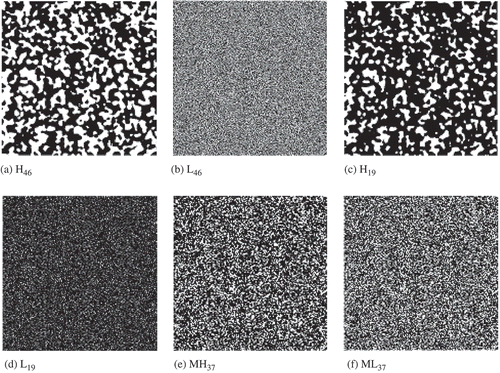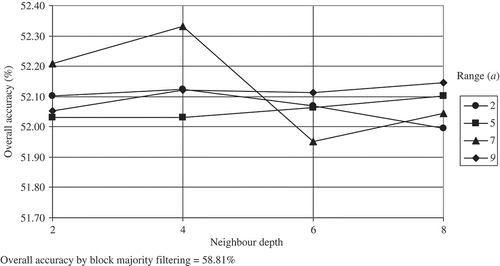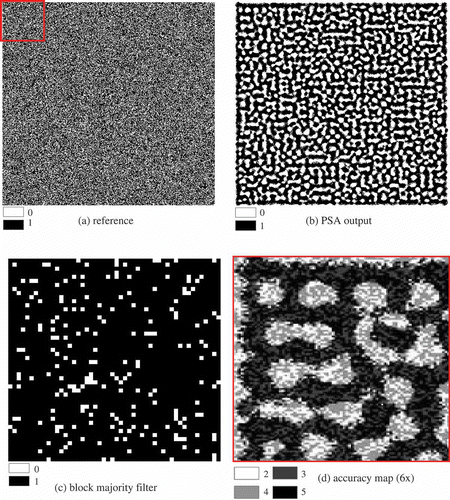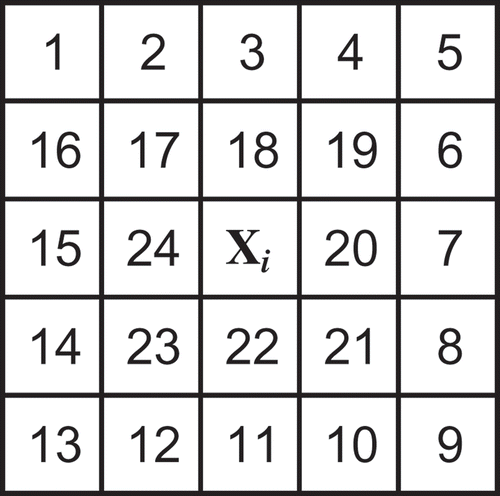Figures & data
Table 1. Detailed configuration of reference maps
Figure 2. Simulated reference maps with different spatial autocorrelation and class proportions. (a) High spatial autocorrelation and low class proportion difference (H46). (b) Low spatial autocorrelation and low class proportion difference (L46). (c) High spatial autocorrelation and high class proportion difference (H19). (d) Low spatial autocorrelation and high class proportion difference (L19). (e) Medium high spatial autocorrelation and medium class proportion difference (MH37). (f) Medium low spatial autocorrelation and medium class proportion difference (ML37). Class ‘1’ is black and ‘0’ is white.

Table 2. PSA setting optimums given overall accuracies for the H46 and L46 maps
Figure 3. Overall accuracy of PSA output under varying neighbour depth and range settings using the H46 reference map (high spatial autocorrelation and low class proportion difference) at a zoom factor of 10.

Figure 4. Overall accuracy of PSA output under varying neighbour depth and range settings using the L46 reference map (low spatial autocorrelation and low class proportion difference) at a zoom factor of 10.

Table 3. Overall accuracy of outputs from optimum PSA settings and block majority filtering (BMF) for maps at zoom factors 2, 4 and 10
Figure 5. Comparison of the reference map to outputs from the PSA and BMF for high class spatial autocorrelation and low class proportion map H46 at zoom factor of 10. In the accuracy map (d): white pixels (‘2’) are ‘0’s which are correctly mapped by the PSA; black pixels (‘5’) are ‘1’s’ that are correctly mapped. Lighter grey pixels (‘4’) are ‘1’s’ mapped as ‘0’s’; and darker grey pixels (‘3’) are ‘0’s mapped as ‘1’s).

Figure 6. Comparison of the reference map to outputs from the PSA and BMF for low class spatial autocorrelation and low proportion difference map L46 at zoom factor of 10. In the accuracy map (d): white pixels (‘2’) are ‘0’s which are correctly mapped by the PSA; black pixels (‘5’) are ‘1’s’ that are correctly mapped. Lighter grey pixels (‘4’) are ‘1’s’ mapped as ‘0’s’; and darker grey pixels (‘3’) are ‘0’s mapped as ‘1’s.

